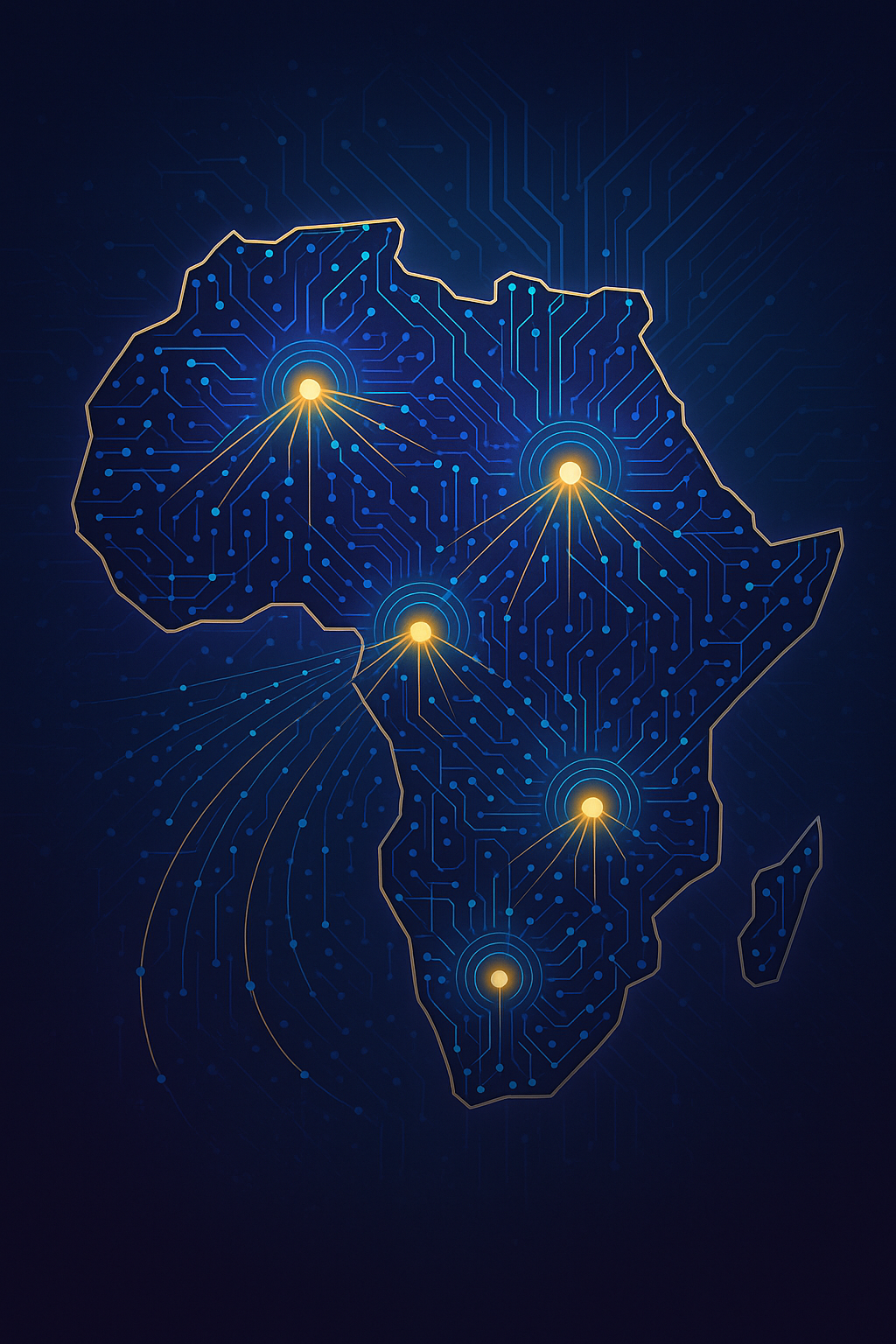Africa's AI Infrastructure Revolution: A Strategic Framework for Emerging Markets

Howard Ekundayo
July 8, 2025

The partnership between Nvidia's Jensen Huang and Cassava Technologies' Strive Masiyiwa to build Africa's first AI factory represents more than infrastructure investment. It signals a strategic framework that could redefine how emerging markets approach AI development. While Silicon Valley races to build ever-larger frontier models, Africa is pursuing a fundamentally different path: building the computational substrate that enables local innovation rather than importing finished AI products.
This infrastructure-first approach addresses a critical market failure. In Kenya, purchasing a single GPU represents 75% of per capita GDP, making it 31 times more expensive in relative terms than in Germany. This disparity forces African developers into expensive dependencies on foreign cloud services, perpetuating patterns of digital colonialism. Project Mufungi's deployment of Nvidia supercomputers across five African countries creates the foundation for computational sovereignty. The strategic choice to prioritize infrastructure over model development reflects sophisticated first principle thinking about market dynamics and competitive advantage.
The Dangote Model Applied to Digital Infrastructure
Masiyiwa's inspiration from Aliko Dangote's refinery project reveals the deeper strategic framework at play. Just as Dangote's $19 billion refinery processes African oil domestically rather than exporting crude, Cassava's AI infrastructure processes African data locally rather than sending it abroad. This vertical integration strategy creates value capture opportunities throughout the stack. The parallel extends beyond symbolism: both projects represent infrastructure investments that enable downstream innovation and reduce dependency on foreign processing capacity.
The ecosystem approach amplifies this strategy's impact. By partnering with Zindi's 50,000 African data scientists, supporting startups like Nigeria's Awarri, and enabling open-source language models through Vambo AI, Cassava creates network effects that compound infrastructure value. This platform strategy transforms GPU access from a bottleneck into a catalyst for innovation. The June 2025 launch timeline appears aggressive, but the phased rollout across South Africa, Egypt, Kenya, Morocco, and Nigeria suggests deliberate market selection based on existing digital infrastructure and regulatory frameworks.
"The strategic genius lies not in competing with OpenAI or Anthropic on model capabilities, but in creating the conditions where thousands of African innovators can build context-specific AI applications. Infrastructure enables ecosystems, and ecosystems drive sustainable competitive advantage."
Execution Challenges and Strategic Imperatives
The execution challenges facing this initiative mirror those confronting any emerging market AI strategy. Power infrastructure remains the fundamental constraint. Advanced GPUs require stable electricity supply that many African grids struggle to provide. The partnership with Microsoft and G42 for geothermal-powered data centers in Kenya points toward necessary infrastructure convergence. Success requires solving multiple infrastructure layers simultaneously: power, connectivity, and computation. This complexity explains why the initiative focuses on countries with relatively mature digital infrastructure rather than attempting continent-wide coverage immediately.
For technology leaders evaluating similar strategies in other emerging markets, Project Mufungi offers a replicable framework. Start with infrastructure that enables local innovation. Build partnerships that create ecosystem network effects. Focus on specific verticals where local context provides competitive advantage. Most critically, measure success not by competing with frontier model capabilities but by enabling applications that solve regional challenges. This approach transforms the narrative from technological catch-up to strategic differentiation. As global AI development increasingly concentrates in a few geographic centers, the infrastructure-first strategy offers emerging markets a path to participate meaningfully in the AI revolution while maintaining digital sovereignty.
Learn more about this article
The AI assistant uses the content of this article to provide relevant answers. Information may not be 100% accurate.
Powered by claude-sonnet-4-5-20250929